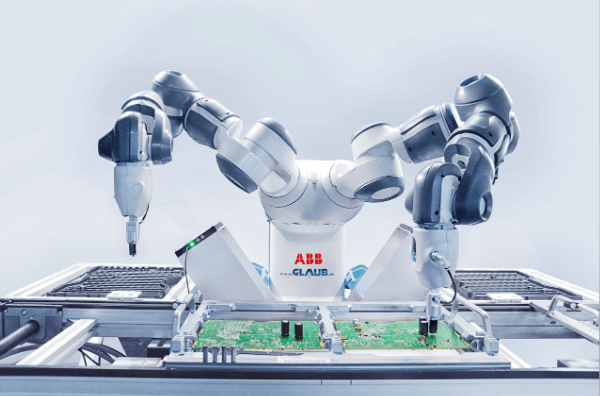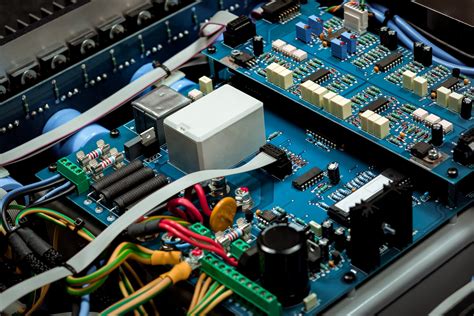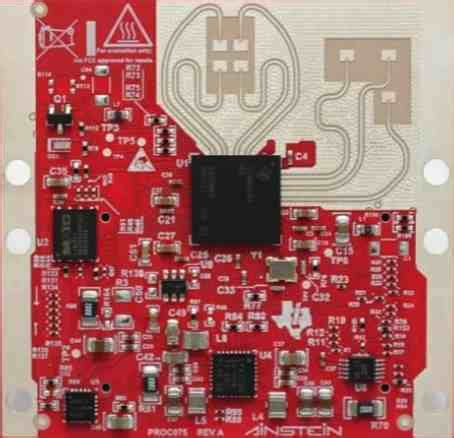Mastering the Art of Assembling PCBs: A Comprehensive Guide
Key Takeaways
PCB assembly is a meticulous process that demands attention to detail and a solid understanding of fundamental principles. By exploring the comprehensive guide, you’ll gain insights into selecting the right components, mastering soldering techniques for reliable connections, and implementing a systematic approach to assembling your PCBs. Emphasis on quality control ensures accuracy and reliability, while effective troubleshooting techniques help you address common issues with ease. Whether you’re new to PCBA or an experienced assembler, these strategies will enhance your skills and improve assembly efficiency. Adopting advanced techniques and best practices will not only elevate your expertise but also guarantee consistent results in every project.
Introduction to PCB Assembly: Understanding the Basics
PCB assembly (pcba) is the intricate process of attaching various electronic components to a printed circuit board (PCB) to create functional electronic devices. Understanding the basics is crucial whether you are a hobbyist or a seasoned professional.
At its core, PCB assembly involves several key stages. Initially, the bare PCB—essentially the board without any components—must be inspected for defects. A common method for this inspection is using an Automated Optical Inspection (AOI) system. Following this, components such as resistors, capacitors, and microchips are carefully placed onto the board through either manual or automated processes.
“A robust foundation in PCB assembly principles lays the groundwork for producing reliable and high-quality electronic devices.”
Key tools and materials required for PCB assembly include soldering irons, solder paste, pick-and-place machines, and reflow ovens. Each tool serves a specific purpose: for instance, soldering irons are used to heat and melt solder paste to create secure electrical connections between components and the board.
| Tool | Function |
|---|---|
| Soldering Iron | Heats and melts solder paste to connect components |
| Pick-and-Place | Automates component placement |
| Reflow Oven | Heats PCBs uniformly to solidify connections |
Ensuring that each component is correctly oriented and positioned is critical for effective PCB functionality. The quality control process includes visual inspections as well as more advanced techniques like X-ray inspection to identify any hidden defects.
Tip: “Always double-check component placement before proceeding with soldering; it saves time and ensures fewer issues during quality control.”
Through careful planning, precision in component placement, and adherence to best practices, you can master the art of PCB assembly, thus ensuring reliable performance in your electronic projects.
Selecting the Right Components for Your PCB
Selecting the right components for your PCB assembly is a crucial step in ensuring the functionality and reliability of your design. It begins with understanding the specific requirements of your circuit, which includes factors such as voltage ratings, current capacity, and environmental conditions. Choosing components that meet these criteria will contribute to a more stable and effective printed circuit board.
Next, consider the component package types; Surface-Mount Technology (SMT) components are generally preferred in modern PCBA due to their smaller size and compatibility with automated assembly processes. However, through-hole components can be invaluable for high-power or high-durability applications. When selecting components, also evaluate their availability and lead time to avoid delays in your project timeline.
Another essential aspect is component sourcing. Rely on reputable suppliers to ensure you receive authentic and high-quality parts. It is wise to maintain relationships with multiple suppliers to mitigate the risk of shortages or price fluctuations. Additionally, pay attention to component specifications and datasheets; this documentation provides critical information about electrical characteristics, mechanical dimensions, and operating conditions.
Lastly, never underestimate the importance of component testing before integrating them into your PCB assembly. Testing can identify any potential defects early in the process, saving time and resources down the line. By carefully selecting the right components for your PCB, you can significantly improve the performance and reliability of your electronic designs.*
Mastering Soldering Techniques for Reliable Connections
Mastering soldering techniques is crucial for achieving reliable connections in PCB assembly. One of the most important aspects is selecting the right type of solder and flux, tailored to your specific PCBA requirements. Lead-free solder is often preferred for its environmental benefits, though it may require higher temperatures. Precision and consistency are key when applying solder; using a controlled amount of heat ensures strong bonds without damaging components. Tin-lead and lead-free solders each have their own advantages and should be chosen based on your specific project requirements.
A quality solder joint should appear smooth, shiny, and be free of cracks or voids. Ensuring proper cleaning of the components and board before soldering can significantly reduce the risk of defects. In addition, practicing a good technique with appropriate tools, such as a high-quality soldering iron with adjustable temperature settings, can greatly enhance your PCB assembly process.
For through-hole technology (THT), patience and steady hand movements are essential to make sure each pin is securely soldered to its corresponding pad. Conversely, surface-mount technology (SMT) demands a different approach, often requiring reflow ovens or hot air rework stations to properly melt the solder paste onto the pads.
Temperature control can’t be overemphasized; too much heat can degrade components while too little may result in poor connectivity. Continuous learning through troubleshooting and correcting mistakes will help you refine your technique for more reliable connections.
Invest time in understanding various soldering techniques such as point-to-point soldering, drag soldering, and reflow soldering. Leveraging these methods appropriately can improve the efficiency of your PCBA process. By mastering these techniques, you will not only enhance the quality but also ensure the long-term reliability of your assembled PCBs.
Step-by-Step Guide to Assembling Your PCB
Assembling your PCB can be an intricate process, but following a structured approach can make it manageable and efficient. First, start by organizing all your components and tools on a clean, static-free work surface. This preparation will help streamline the PCB assembly process. Next, carefully place each component according to the design specifications, ensuring that polarities are correctly oriented; this step is crucial for components like diodes and capacitors.
Once all components are placed, use a soldering iron to secure them to the board. Mastering the art of soldering is essential for achieving strong and reliable connections. Apply just enough solder to cover the pad without creating shorts or cold joints. A key aspect of this process is maintaining steady hands and patience. For surface-mount devices (SMDs), consider using a reflow oven or hot air station for more precise control.
After soldering, inspect each connection with a magnifying glass or microscope to ensure they are clean and solid. Any defects encountered at this stage should be corrected immediately to avoid functionality issues later on.
Next, proceed with mounting the board into its enclosure if applicable. Ensure that all connectors align perfectly with their respective slots or interfaces to avoid mechanical stress.
Lastly, perform a thorough visual inspection and use a multimeter to check for continuity in critical paths. This final step in pcba helps catch any oversights like misplaced components or connectivity issues. By following these steps meticulously, you can achieve high-quality results in your PCB assembly projects.
Remember that practice and attention to detail are your best allies in mastering PCB assembly techniques.
Quality Control: Ensuring Accuracy and Reliability
In the realm of PCB assembly (PCBA), ensuring the accuracy and reliability of the boards you build is paramount. The first step in quality control is meticulous inspection of components before starting the assembly process. Each component should be checked for defects to prevent faulty parts from compromising the final product. During assembly, consistent monitoring through visual inspection and automated optical inspection (AOI) can help catch errors before they escalate.
Furthermore, solder joint integrity is crucial for maintaining reliable connections. Utilizing advanced soldering techniques like reflow soldering ensures uniformity and reduces the chances of cold joints or solder bridges. For complex boards, X-ray inspection can be a valuable tool to verify hidden solder joints and components.
Another key aspect of quality control is functional testing. This involves powering up the assembled PCB to confirm that it performs as intended under real-world conditions. Implementing in-circuit testing (ICT) can reveal issues like short circuits or incorrect component placements early in the process.
Finally, documentation plays a vital role in ensuring accuracy throughout PCBA. Maintaining detailed records of each step helps track progress, identify recurring issues, and streamline troubleshooting efforts. By adhering to rigorous quality control standards, you enhance not only the reliability but also the longevity of your PCBs, leading to better performance and customer satisfaction.
Troubleshooting Common Issues in PCB Assembly
In the realm of PCB assembly (PCBA), encountering issues is inevitable, but the skill lies in effectively troubleshooting these problems to maintain the integrity of your project. One of the most frequent challenges is dealing with soldering defects. These can range from cold joints to solder bridges, often caused by improper temperature control or insufficient cleaning. To address this, ensure that your soldering iron is appropriately calibrated and that your work area remains free from contaminants.
Another common issue is component misalignment. This problem can stem from inaccuracies in component placement or movement during the soldering process. Utilizing a high-quality pick-and-place machine and verifying component positions before soldering can significantly reduce this risk.
Issues with PCB traces such as breaks or shorts can also be a source of frustration. These often result from handling errors or manufacturing defects. Carefully inspecting the board under a microscope and conducting continuity tests will help identify and resolve these issues.
Moreover, ensuring proper thermal management is crucial, as overheating components during soldering can lead to thermal damage and affect circuit performance. Using heat sinks or other cooling methods can mitigate this problem.
Finally, conducting thorough quality control checks, including visual inspections and functional testing, helps catch issues early on. Implementing a standardized assembly process and adhering to best practices will not only minimize errors but also enhance overall assembly efficiency.
By mastering these troubleshooting techniques, you can significantly elevate your expertise in PCB assembly, ensuring reliable and efficient results for every project you undertake.
Advanced Techniques and Best Practices for Experienced Assemblers
For seasoned professionals in the realm of PCB assembly, embracing advanced techniques and best practices is essential to achieving superior results. First and foremost, understanding the nuances of surface-mount technology (SMT) versus through-hole technology can significantly enhance the efficiency and precision of your PCBA projects. When it comes to soldering, mastering reflow soldering and using the correct temperature profiles are critical for ensuring durable connections.
Additionally, integrating automated optical inspection (AOI) into your workflow allows for the early detection of errors, improving overall assembly quality. Using high-quality stencils and ensuring proper alignment can mitigate common soldering issues like bridges and gaps. It’s also beneficial to employ thorough cleaning methods to remove flux residues that can cause long-term reliability issues.
Moreover, experienced assemblers should stay updated with evolving standards such as IPC-A-610, which provide guidelines on acceptable conditions in PCBA. Advanced troubleshooting techniques, including thermal profiling and the use of X-ray inspection, can help in diagnosing complex issues that aren’t visible through traditional methods.
By continuously refining these advanced skills and adhering to industry best practices, experienced assemblers can not only enhance their craft but also ensure that their PCBs meet the highest standards of performance and reliability.
Conclusion
In summary, mastering PCB assembly is an invaluable skill that bridges the gap between theoretical knowledge and practical application in the field of electronics. This comprehensive guide has walked you through every critical step, from the meticulous selection of components to the finesse required in soldering techniques. Ensuring quality control and effectively troubleshooting common issues are essential practices that will elevate your assembly capabilities. Whether tackling a simple project or delving into more complex designs, the principles and best practices outlined here provide a solid foundation for achieving reliable, high-quality PCBA results. By continually refining these skills and integrating advanced techniques, you can ensure that every PCB assembly you undertake meets industry standards of excellence.
Frequently Asked Questions
In this section, we’ll address some of the most common questions about PCB assembly to help you gain a clearer understanding of the process and techniques involved. Whether you’re a hobbyist or a seasoned professional, these insights will be invaluable.
What is PCB Assembly?
PCB assembly (PCBA) is the process of mounting electronic components onto a printed circuit board. This involves soldering and placement techniques to ensure that components are securely attached and function correctly.
What Tools Do I Need for PCB Assembly?
Essential tools include a soldering iron, solder wire, tweezers, and magnification equipment like a microscope or magnifying glass. Advanced assemblers may also use reflow ovens and pick-and-place machines for greater precision and efficiency.
How Do I Choose the Right Solder for My PCB?
The choice of solder depends on factors like component types and environmental considerations. Lead-free solder is often preferred to meet ecological regulations, while rosin-core solder can improve connection reliability.
How Can I Ensure Quality Control in PCB Assembly?
Quality control begins with proper component selection, followed by meticulous soldering techniques. Regular inspection using magnification tools can help identify issues like cold joints or bridging. Automated Optical Inspection (AOI) systems are also invaluable for maintaining high standards.
For more details on achieving reliable results in PCB assembly, please click here.
Understanding these frequently asked questions will equip you with the foundational knowledge necessary to elevate your PCBA skills.







